The bean protocol or the Karen Hurd bean diet is a way of eating that is reported to help with many different health issues. The protocol involves eating beans or lentils regularly while avoiding certain foods and other toxins for at least 3 months. In this post I share what the bean protocol is, the rules, and how to do it.
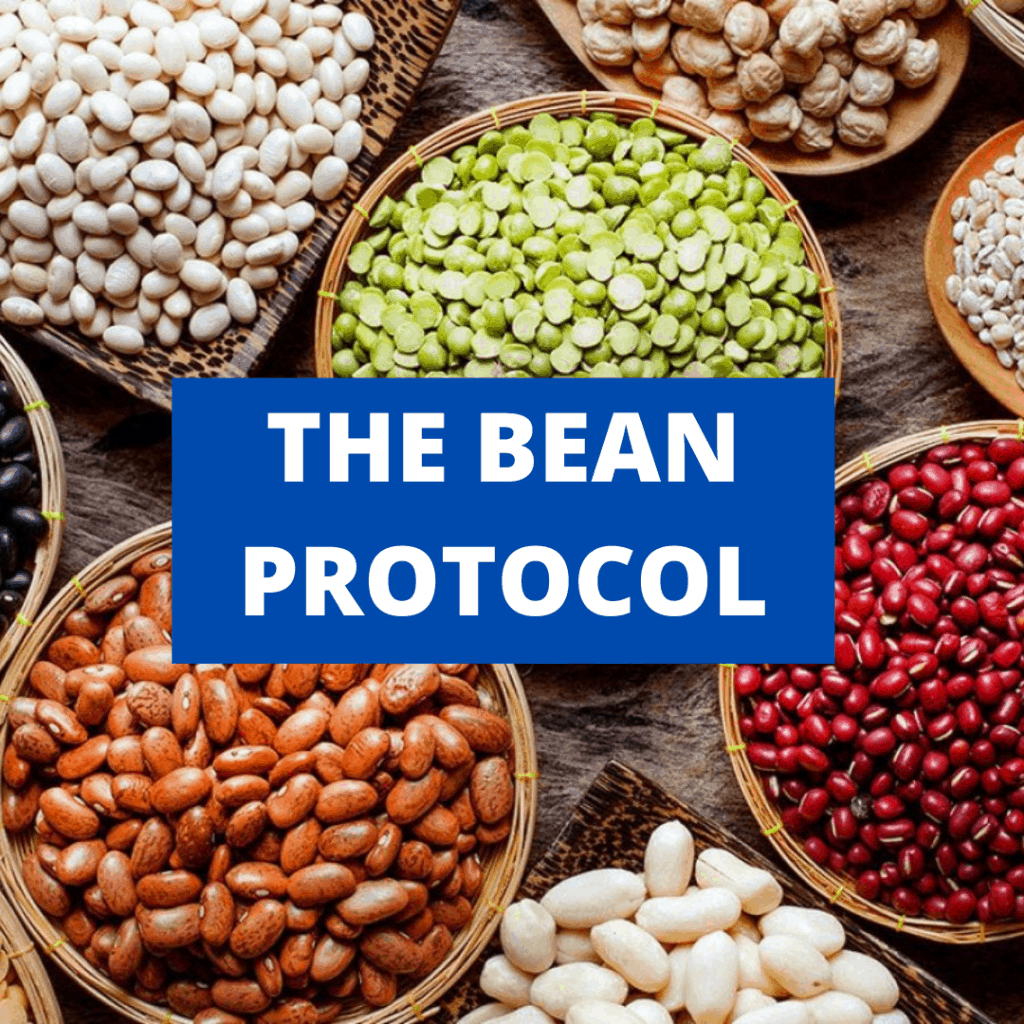
Ever since Juli from PaleOMG shared her progress with the bean protocol I have been curious to learn more about it. Truth be told I had never heard of it before but have been seeing more and more nutritionists talk about it recently so decided it was time I do some of my own research.
Table of Contents
- What is the bean protocol?
- What is so special about beans?
- Why do the bean protocol?
- How do you serve beans?
- Will I get gas eating that many beans?
- Will I gain weight eating that many beans?
- What to expect on the bean protocol?
- My experience on the bean protocol:
- Where can I get more information about the bean protocol?
- Frequently asked questions:
- Other health information you will like:
- Our expertise:
What is the bean protocol?
The bean protocol or bean diet was originally developed by a woman named Karen Hurd who used the diet to cure her young daughter of her health issues. Karen Hurd is a former bio-chemist for the military and in 1989 her 18-month-old daughter was poisoned by a high concentration of pesticides. Her daughter experienced seizures, warts, infections, allergies and other health problems as a result.
The doctors Karen went to couldn’t explain or understand her daughter’s ailments and told her that her daughter was dying and there was nothing that could be done. Unsatisfied with that answer Karen took it upon herself to study the human body at her local medical library.
After extensive research, she made a nutritional treatment for her daughter and fed it to her via syringe. Within two weeks, her daughter's symptoms started to improve and by week six she had her healthy baby girl back. This was the beginning of what would later be known as the bean diet or bean protocol.
The bean diet is basically what it sounds like: eating a lot of beans (or lentils). The idea behind eating so many beans is that they are high in soluble fiber and soluble fiber binds with your bile in the digestive tract. This is said to be beneficial because your liver stores a lot of fat-soluble toxins, excess hormones, and other waste that we don’t want getting into our bile, and soluble fiber helps get rid of that by binding with the bile for us to then eliminate through our bowel movements. If we don’t have soluble fiber in the gut, most of that bile would get recycled and re-used instead. It's felt that this toxin filled bile can then manifest as various health issues or diseases.
With the bean protocol, you are supposed to eat beans or lentils 3-6 times per day for at least 3 months.
When you eat your beans on the bean protocol you can eat them on their own, or with lean protein, vegetables, or a small amount of fruit (although you are supposed to limit fruit as much as possible when on the bean protocol).
You are supposed to avoid eating oils or fats at the same time as your beans because you don’t want the fats to bind with the soluble fiber. You want to separate your beans from fat by at least 1.5 hours. You want the soluble fiber to bind with the bile for optimal detox support. How many beans, and what types of beans are eaten are individualized based on your health conditions and needs.
And besides eating all those beans, you are also supposed to cut out sugar (including fruits), caffeine and perfumes. The idea behind these eliminations is that coffee and sugar stimulate adrenaline, which can make health issues worse, while fragrances can contain endocrine disruptors and contribute to hormonal imbalances. You are also supposed to do gentle exercise daily, avoid strenuous exercise, and limit your alcohol intake.
There are also many other things you need to do during the bean protocol and other rules you are supposed to follow including:
- Avoiding dairy
- Eating a cup and a half salted nuts a day (wait 1.5 hours after eating beans and one hour after nuts to have beans again)
- Not eating bacon, sausage, or other fatty meats
- Not having coconut oil
- Not eating soy
- Not having supplements - of course this one needs to be individualized. If you are on prescribed supplements please don't stop taking them!
- Eat a palm sized protein at each meal (eggs, fish, lean steak, no dark meat)
- Eat 3 servings of vegetables per day
- Drink 3/4 gallon of a water a day, with food, and you are supposed to drink room temperature water or warmer
- Get 56 hours of sleep a week
- You can have condiments as long as they have less than 5g of sugar serving
If you would find it helpful, I created a free printable PDF that you can download below to help you with the bean diet:
What is so special about beans?
Beans and psyllium husk contain the most amount of soluble fiber. Psyllium husk is great but void of other nutrients, so beans are preferred. However, if someone doesn’t do well with beans, psyllium husk can be used instead or you can start with a teaspoon or tablespoon of beans just once a day to get used to the fiber. It’s all about starting small and going slow.
Why do the bean protocol?
The bean protocol is said to help with many different health conditions. Conditions like acne, inflammatory bowl disease, diabetes, hormone imbalances, thyroid issues, obesity and more. Now I must preface this by saying the bean protocol has never been studied scientifically so the reported health benefits are based on anecdotal reports alone. Like everything, please always discuss major diet changes with your own doctor or health practitioners before starting, as this diet may not be right for you and your specific health needs.
However, there are many health benefits associated with eating beans, including weight loss, better gut health and improved metabolic markers, so it is likely that the diet's high intake of beans is responsible for the many reported health benefits.
How do you serve beans?
On the bean protocol you can simply add beans to your regular meals, or eat them on their own as a snack. Adding a bit of salt, pepper, chopped cilantro, onion or tomato is one of my favourite ways to eat beans. Of course there are many other ways to add beans to your diet including using them on salads, in soups, stews, curries and more.
Will I get gas eating that many beans?
You might. If your body isn't used to getting a lot of soluble fiber you might notice a lot of gas when you first start eating beans or lentils. If that is the case for you, it is recommended that you start with a small amount of beans and slowly work your way up as your body adjusts.
You may also find that certain beans cause more gas than others so you may have to do a bit of experimenting to figure out which beans work best for you.
Will I gain weight eating that many beans?
You may or you may not. This will likely depend on what you were eating previous to starting the bean protocol. If you were under-eating or malabsorbing nutrients you might gain weight adding beans to your diet (which would be a good thing).
However, if you were eating a more typical North American style diet, or processed food diet before, I suspect you will actually lose weight on this diet, as diets high in beans have been shown to help with weight loss.
As well, because beans are filled with so much fiber, they are very filling so you will likely naturally adjust your food intake to compensate so that you aren't over-eating.
What to expect on the bean protocol?
Some people do experience an initial detox period when they first start, where they get worsening symptoms before they start feeling better (this can be worse GI symptoms, acne or other skin issues etc). Others don't seem to go through this so it likely depends on what your diet was like before starting the protocol and what health issues you are dealing with. I personally had worsening GI symptoms (gas and diarrhea) but no other adverse effects.
My experience on the bean protocol:
I must be honest and admit that I only tried the bean protocol for a few weeks. I personally found this diet and all of its rules too restricting for me. The stress of all the rules was just too much, and outweighed any potential benefits. I also found that eating that many beans did make me feel too gassy and gave me diarrhea. It just wasn't the best fit for me personally.
Where can I get more information about the bean protocol?
I have come across two practitioners who coach clients through the bean protocol. Karen Hurd and Unique Hammond. If you do decide to try this diet I would recommend working with an experienced practitioner rather than trying to navigate this on your own.
Well I hope you found this helpful. If you have any questions please leave them in the comments and if you have tried this diet please let me know how your experience was.
Frequently asked questions:
Yes you can.
Yes you can.
Other health information you will like:
- How to heal Keratosis pilaris naturally
- Is stainless steel cookware safe?
- How to choose safe cookware
- Why I don't use retinol
Since you made it this far we are basically best friends so be sure to follow me on Instagram, Pinterest, TikTok and Facebook where I share even more recipes and healthy living tips! And don’t forget to leave this recipe a star review before you go!
Our expertise:
Dr. Erin Carter, MD, FRCPC, is a physician with board certifications in internal medicine and rheumatology. She is passionate about nutrition, environmental health and low toxicity living and has been doing research and publishing information in this area for years. She is also a self-trained chef and has been creating and publishing recipes since 2015. Her recipes have been featured on many different websites and online publications.

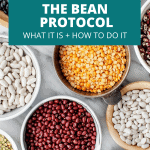
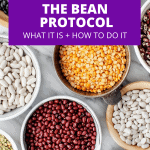
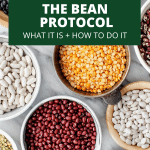
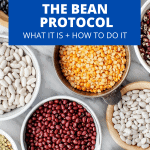
Tiffany Wade
How does it take to receive the cheat sheet please? I signed up yesterday but haven’t received anything yet. Many thanks
Erin Carter
It can take up to 24 hours and often ends up in spam folders so check there too.
Joseph
I find regular legumes to be beneficial to my elimination.
Please tell me why she doesn't allow coconut oil.
Erin Carter
Hey Joseph! I'm really not sure why she doesn't allow coconut oil. I've never been able to find an explanation anywhere. There are certain things about this protocol that I don't get, that being one of them....
Maya
She has said that coconut oil is a saturated fat and thus causes free radicals on the body due to its instability. She says it’s fine to use topically.
Erin Carter
From a science and nutrition standpoint that doesn't really make any sense. Saturated fats are actually quite stable (since the bonds are all saturated) and are not likely to create free radicals. It's unsaturated fats that are the ones likely to produce free radicals because they are so unstable.
Sam
"Drink 3/4 gallon of a water a day, with food, and you are supposed to drink room temperature water or warmer". I've always read that you shouldn't drink with meals because it dilutes the digestive enzymes and stomach acid. Is this correct, does Karen really meant to drink with meals that much water?
Thanks Erin!
Erin Carter
Ya I am also not sure why this recommendation is part of the bean protocol. I am with you in that drinking water with meals can inhibit digestive enzymes that you need to digest the food.
Suzanne
I’m confused about fruit. In one place you say eat a small amount and in another place you say fruit is not allowed.
Does this protocol require giving up fruit for three months?
Erin Carter
This seems to depend who you listen to and what your underlying health issues are. I have seen some authors say avoid fruit completely for 3 months and others say you can have a small amount. Everyone's nutritional needs and health problems are different, which is why I am guessing some people are allowed fruit and other's aren't, but I have personally never tried this diet. If you are going to try it I would recommend working with a practitioner with experience using it, as the protocol gets tailored to the individual.
Josephine Laakso
Thanks for sharing this as I have been thinking of trying it. Do you know if you can eat bread with this protocol? I am gluten free so it would be low gi/gluten free bread
Erin Carter
Yes bread is allowed if it something you already eat.